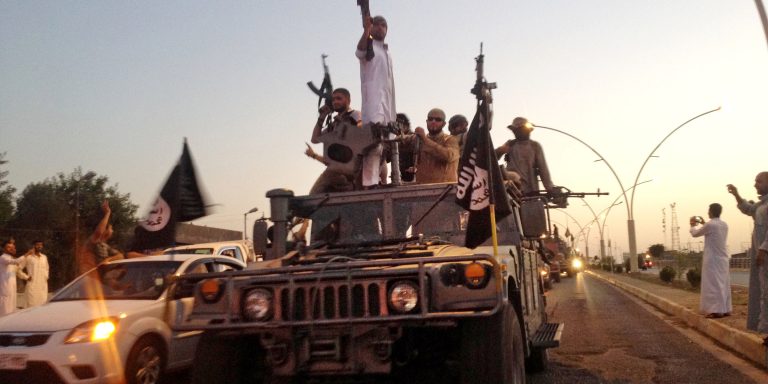INTELBRIEF
January 3, 2018
TSC IntelBrief: The Islamic State at the Start of 2018

- The so-called Islamic State ended 2017 a very different group than the one that began the year; weaker in many ways and more dispersed.
- Despite its military defeats in Iraq and Syria, the Islamic State is still far stronger than it was at its 2009-2010 nadir.
- On December 28, the Islamic State claimed a suicide attack in Kabul that killed at least 40 people, an indication of growing operational capability.
- The return of some of the thousands of foreign fighters fleeing Iraq and Syria will be among the largest global counterterrorism challenges for years to come.
As 2018 begins, it is worth noting how the so-called Islamic State has changed from a group that governed substantial territories at the start of 2017, including Mosul and Raqqa, its most significant symbolic and logistics centers in Syria and Iraq, to a shrunken version of its former self. The Baghdad government has announced that the Islamic State no longer holds any part of Iraq; a remarkable turnaround for a country that lost so many large cities and their surrounding areas in 2014. The same can be said for Syria, though to a lesser degree. While the Islamic State still holds a strip of territory along the Euphrates, it will likely be forced from the area within a month. Away from the battlefield, its much-hyped propaganda arm continues its output, but at a markedly lower level in terms of quantity and quality.
However, there is no question that the Islamic State, despite its personnel and territorial losses, remains an effective terrorist organization. In Anbar and other Iraqi provinces, IS is employing one of its favorite tactics—assassinations—as it reverts to its insurgent roots. In Syria, once the Islamic State is pushed from its redoubts, it will also continue as a very strong insurgency and terrorist threat. While no longer an existential menace, the group retains the means to destabilize entire cities and provinces in both countries with sustained attacks.
Meanwhile, the Islamic State’s defeat and loss of its proto-state—while a categorical necessity and positive achievement—appears to have done little to weaken it in places far removed from Syria and Iraq. On December 28, the group claimed responsibility for a suicide attack at a Shi’ite cultural center in Kabul, killing at least 40 people. According to the SITE Intelligence Group, the Islamic State has conducted eight suicide attacks in Kabul since October 2017, making the Afghan capital one of the terrorist group’s most active areas for operations. This is a remarkably bad development for a country already wracked by decades of war. The Islamic State has also made headway against the Taliban, recruiting or forcing young Afghans to conduct attacks against civilian and particularly Shi’a targets; a different approach from Taliban attacks that tend to focus on government operations and buildings. In Egypt, militants linked to the Islamic State have claimed multiple recent attacks on the Coptic Christian community and are suspected of the deadliest attack in Egypt’s modern history against the Sufi Muslim minority. The Egyptian government is battling IS-affiliated militants in North Sinai. In Yemen, the Philippines, Libya, and Somalia, the Islamic State continues to hang on, maintaining its presence despite significant local and international pressure.
For the West, the threat from the Islamic State has been constant for several years: a mix of inspired small-scale attacks and less frequent but deadlier directed attacks. Across Europe, security services have been arresting suspects and disrupting attacks by IS-linked and IS-inspired individuals from the UK, to Germany, to Italy, to Turkey. In Russia, the Islamic State claimed responsibility for a recent bomb attack in St Petersburg and a U.S. intelligence tip helped Russia prevent another bomb attack in St Petersburg earlier in December. Even with its territorial and human losses and diminished social media propaganda, the group can still inspire people with its violent ideology of bin Ladenism; an ideology that shows no sign of defeat. Law enforcement and intelligence agencies around the world are forced to struggle with an unmanageable threat matrix. Services like the FBI and MI5 are trying to keep tabs on thousands of known threats while struggling to prioritize and assess a far larger pool of potential violent actors. The return to their home countries of some of the thousands of foreign fighters fleeing Iraq and Syria will be among the largest global counterterrorism challenges facing governments for years to come.
For tailored research and analysis, please contact: info@thesoufancenter.org
.
.
[video width="960" height="540" mp4="https://thesoufancenter.org/wp-content/uploads/2018/01/Final-Edit-1-100.mp4" poster="https://thesoufancenter.org/wp-content/uploads/2018/01/AP_140692815669.jpg"][/video]